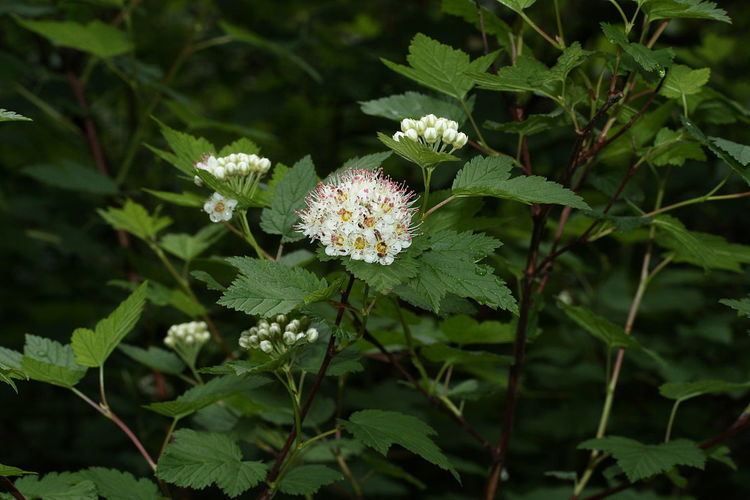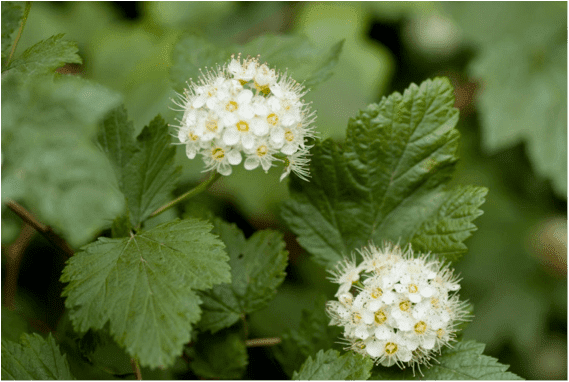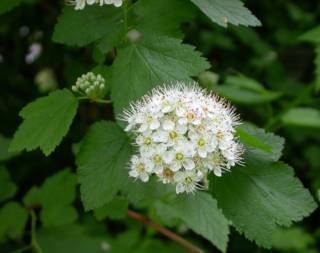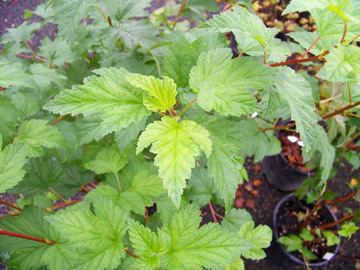Rank Species | Higher classification Ninebark | |
 | ||
Similar Ninebark, Holodiscus discolor, Spiraea douglasii, Oemleria cerasiformis, Rosa nutkana | ||
Physocarpus capitatus
Physocarpus capitatus, commonly called Pacific ninebark or tall ninebark, is a species of Physocarpus native to western North America from southern Alaska east to Montana and Utah, and south to southern California.
Contents
- Physocarpus capitatus
- Pacific ninebark western ninebark physocarpus capitatus leaves bark and fruit
- References

It is a dense deciduous shrub growing to 1–2.5 metres (3 ft 3 in–8 ft 2 in) tall. The name comes from the appearance of the bark, which is flaky, peeling away in many layers. The shrub has distinctive maple-like lobed leaves 3–14 centimetres (1.2–5.5 in) long and broad, and clusters of small white flowers with five petals and numerous red-tipped stamens. The unique fruit is an inflated glossy red pod which turns dry and brown and then splits open to release seeds.

It is often found in wetlands, but also forms thickets along rivers and in moist forest habitats. While it grows most robustly in wet environments, it is drought-tolerant to a degree and is a popular California garden plant.

Pacific ninebark western ninebark physocarpus capitatus leaves bark and fruit

